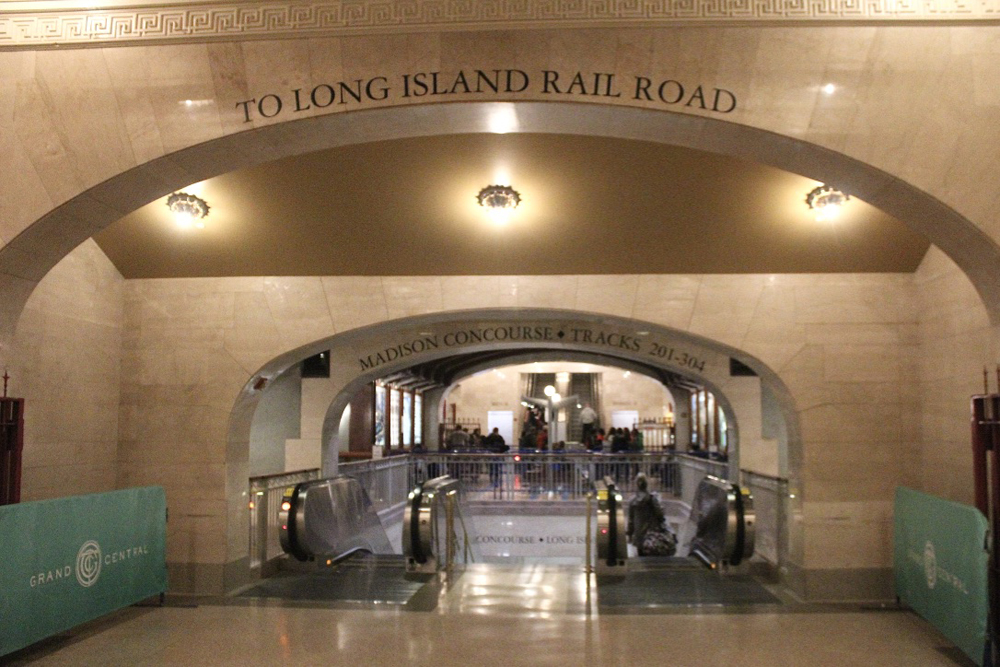

NEW YORK — “Putting it Together” (Trains Magazine, July 2023) — a look at major commuter rail projects in the New York area — explains how Long Island Rail Road trains now serve a massive underground station next to venerable Grand Central Terminal, home to Metro North’s Hudson, Harlem, and New Haven routes.
Commuters connecting between the Metropolitan Transportation Authority’s two heavy rail systems previously had to bridge a 1-mile gap between Grand Central and Penn Station, either with a 20-minute walk, a punishing “change at Times Square” subway ride, or by racking up time and money fighting traffic in a crosstown taxi or rideshare vehicle.
Now it’s a simply a walk — fully protected from the elements, although a bit long and sometimes confusing — to LIRR’s Grand Central Madison, the eight-track terminal that, at its lowest reaches, is some 140 feet below street level. Since the station opened after the magazine article was written, it couldn’t offer a look at Grand Central Madison in operation. So Trains News Wire recently visited the complex on a rainy Sunday afternoon in an attempt to understand what is involved in moving from one station to the other.
Exiting Grand Central
As seen in the photo at top, travelers in the signature Main Concourse are directed to escalators and elevators on the west side of the station leading to the elongated underground passage, Grand Central Madison’s concourse, that parallels GCT’s existing tracks. The diagram at right by illustrator Rick Johnson, also included in the Trains article, shows this path in blue. It’s probably a good idea to take a copy with you.
Follow the signs (or take an elevator)
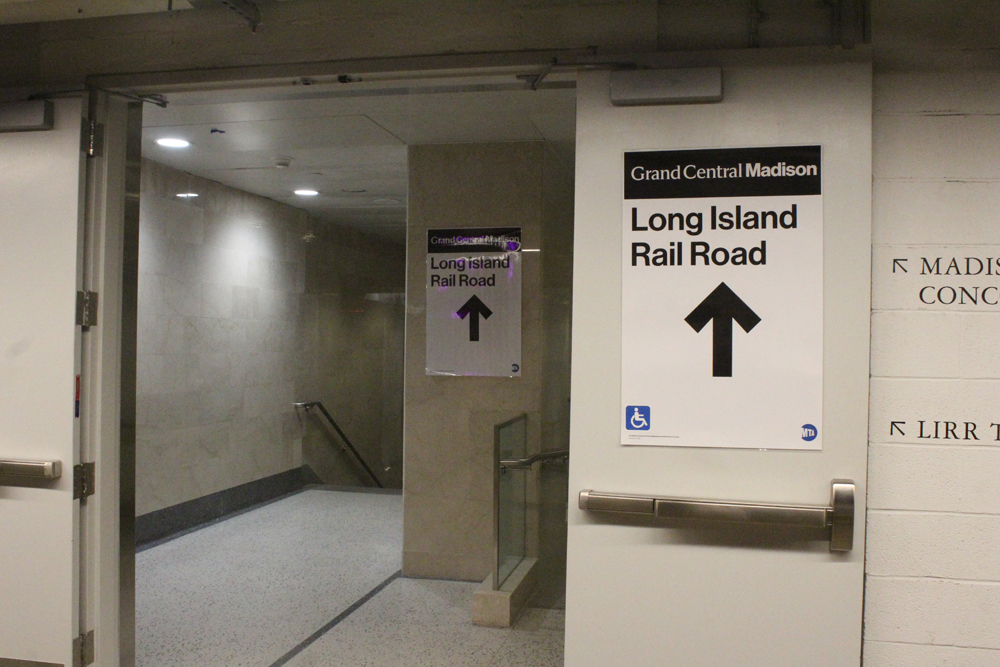
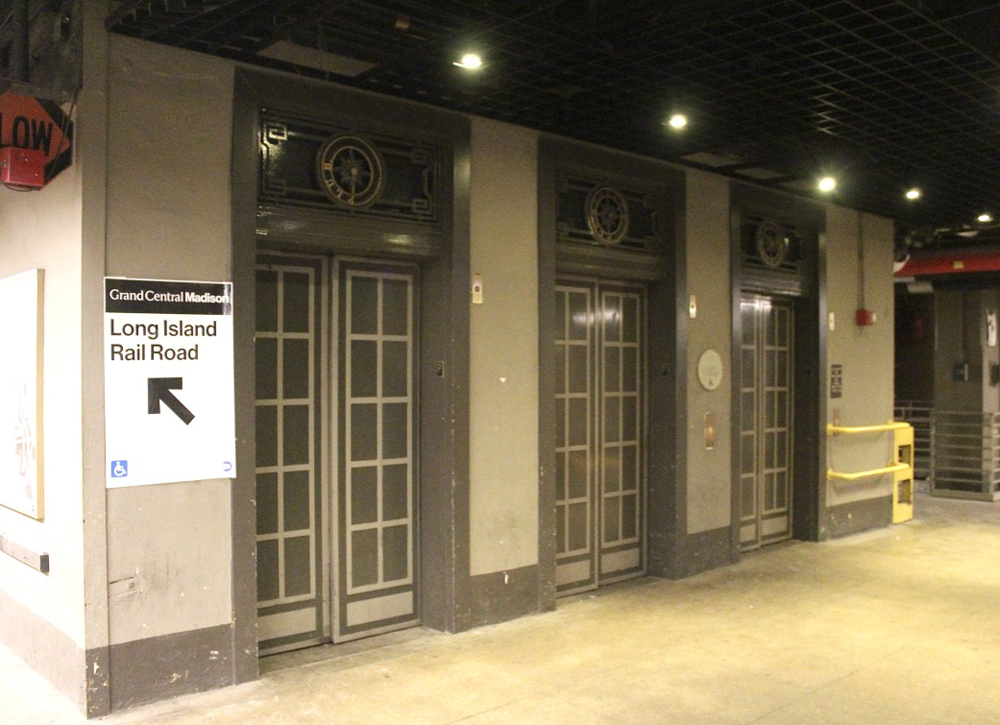
But what if you are arriving on a Metro-North train? It might come in on the upper concourse level (tracks 11-42) or lower level (101-117). There is no need to go up to the concourse and then go back down again, if arriving on the lower level. In that case, it’s best to follow the signs through a labyrinth of passageways. It is also possible to take an elevator between levels; one bank is opposite track 30 on the upper level and between tracks 112 and 114 on the lower level. Again, the station’s copious signage helps.
Mid-platform shortcuts
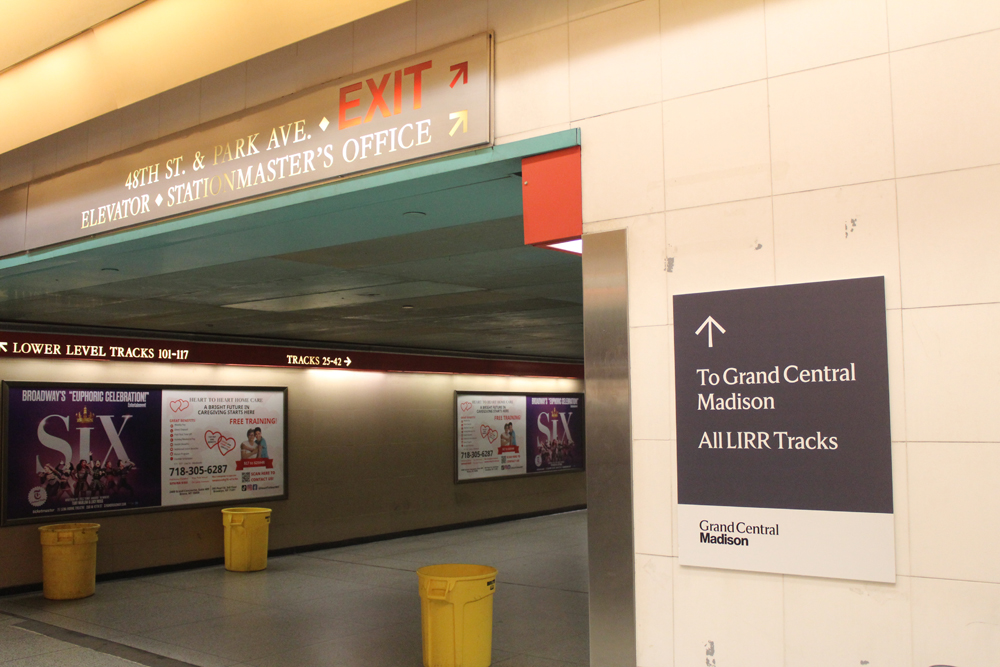
There are also passages perpendicular to both Grand Central Terminal and Grand Central Madison’s concourse below GCT’s tracks that can cut short the walk and connection route. The yellow barrels in the photo were placed to catch dripping rainwater. It’s easy to get turned around underground, but as you can see, the track numbers and directions to the LIRR are always prevalent on walls of the passageways.
The concourse, and street exits
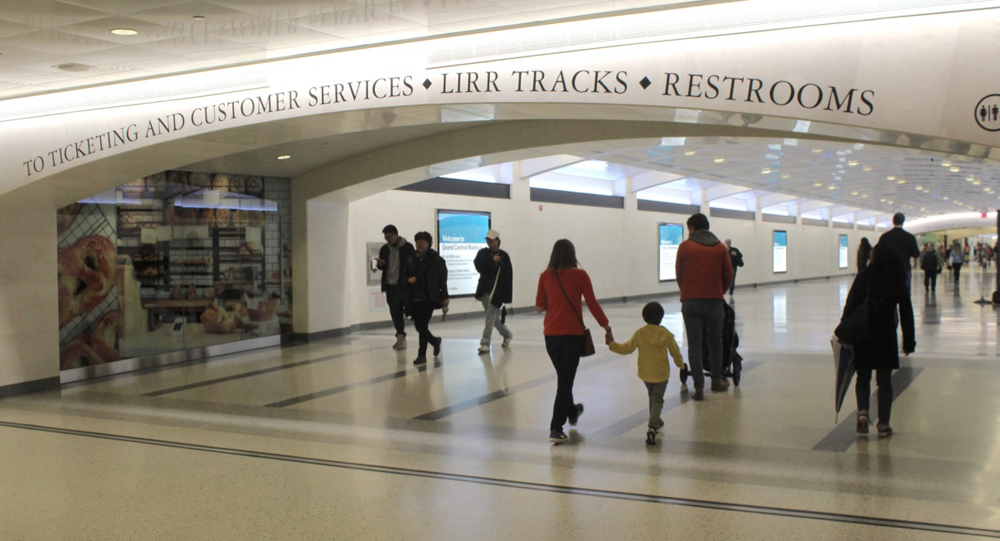
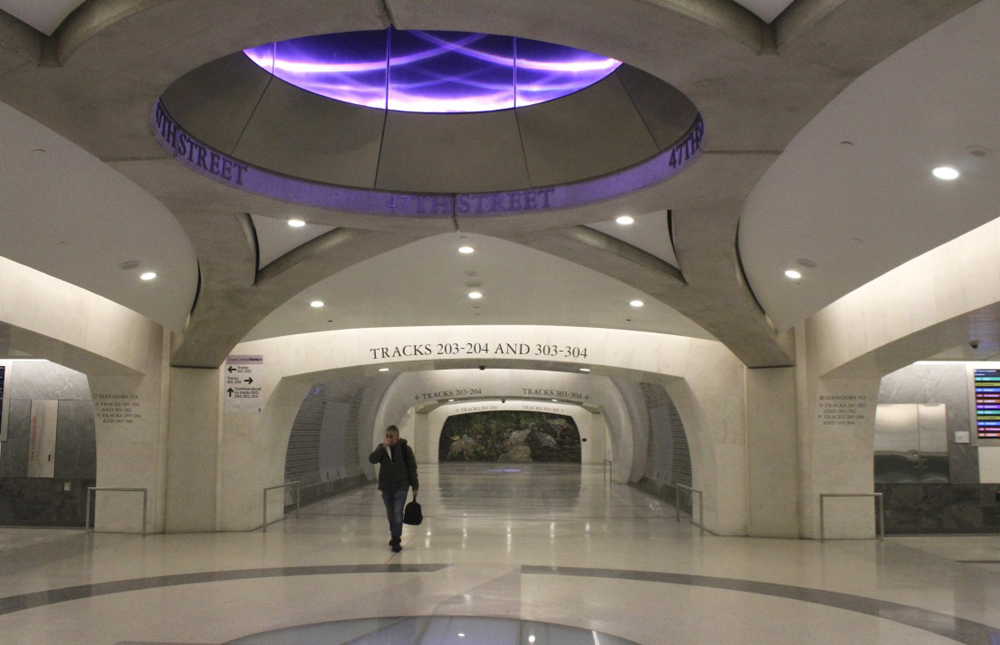
Whatever the entry point, all foot traffic flows to the spacious underground Grand Central Madison concourse that parallels both Grand Central Terminal’s tracks and the Long Island platforms below. (That glass-windowed area with the images of food will eventually be retail space; shops and restaurants in the concourse aren’t expected to open until 2024.) The concourse — once a layover yard for Grand Central Terminal equipment — also serves as an all-weather passageway to get from GCT trains to East Side destinations between 43rd and 48th streets, even if you’re not connecting to another LIRR train. The domed entryway is at 47th Street, where there also is an elevator to Grand Central tracks.
Where to?
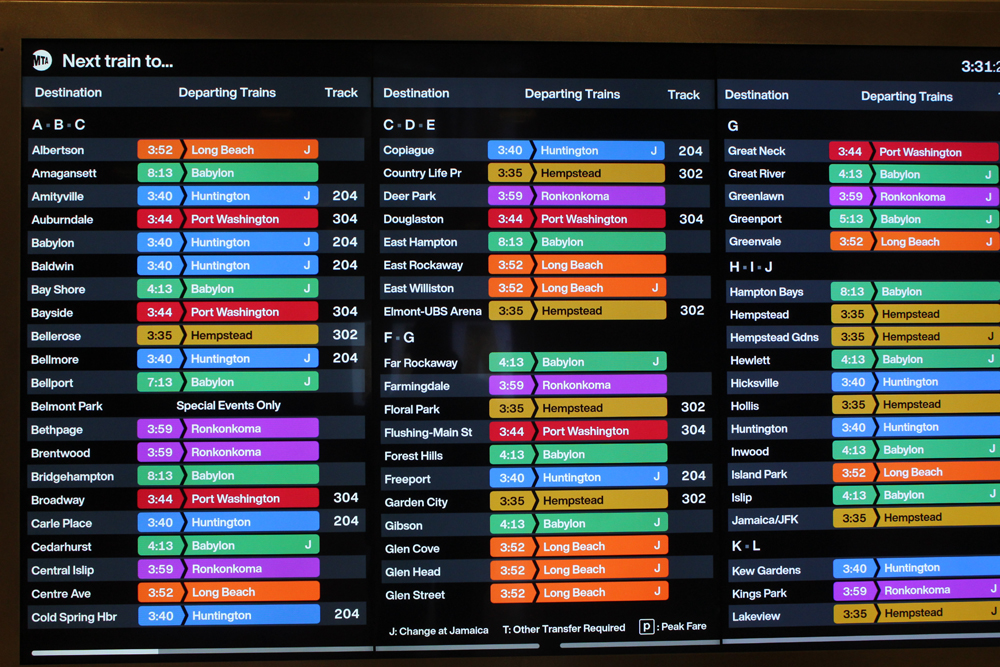
Along the concourse walls (and above an adjacent ticket and information counter) are color-coded information signs with an alphabetized listing of every LIRR station, the time and destination of the next train leaving that stops there, and the track it departs on. These are similar to displays at the LIRR’s Penn Station ticketing area, but are much easier to read here at eye level. Grand Central Terminal doesn’t have station-specific listings like this for Metro North trains.
To the mezzanine
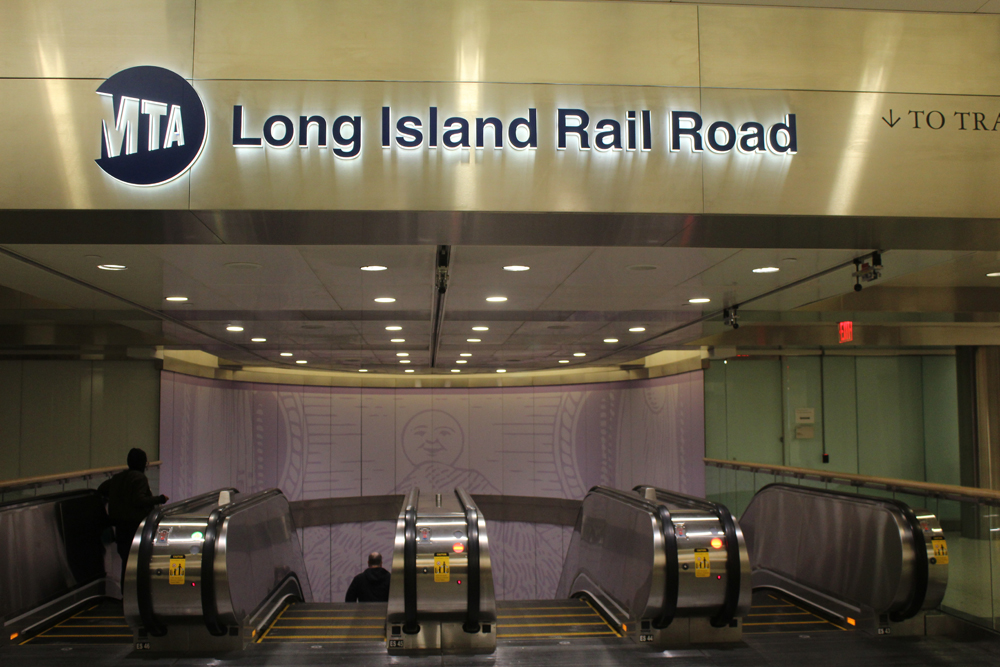
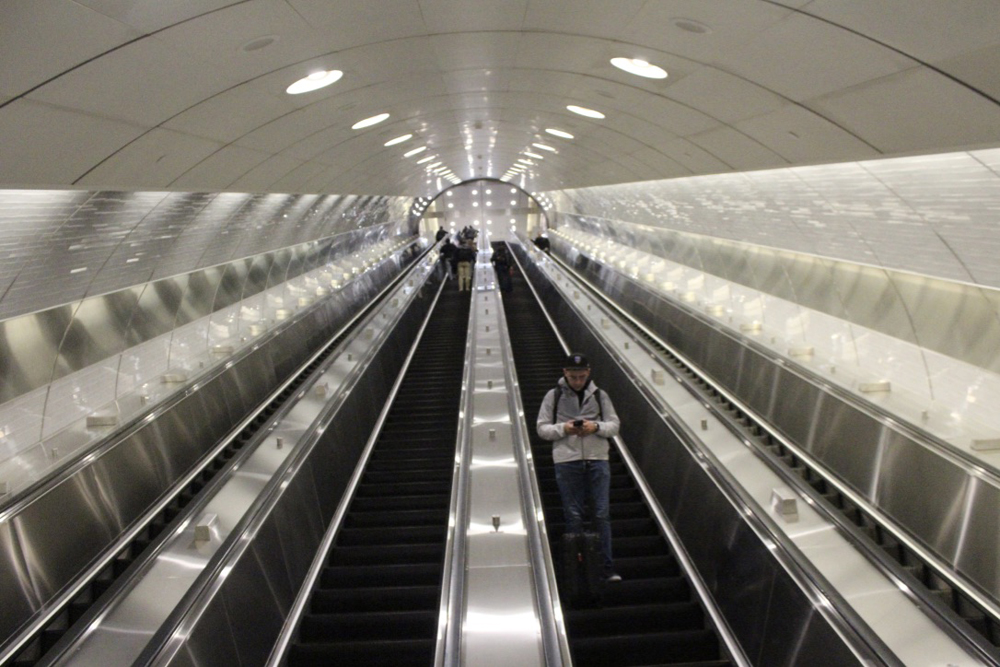
From the concourse, there are elevators and escalators down — way down — to Grand Central Madison’s mezzanine level, which is sandwiched between 200-numbered tracks above it and 300-numbered tracks below. Although it is a long ride on the escalator to get down or up — these are the longest escalators in the MTA system; a ride takes about 2 minutes — the bright lighting counteracts any feeling of claustrophobia. There is also a generous amount of public art at the top and bottom landings.
To the trains
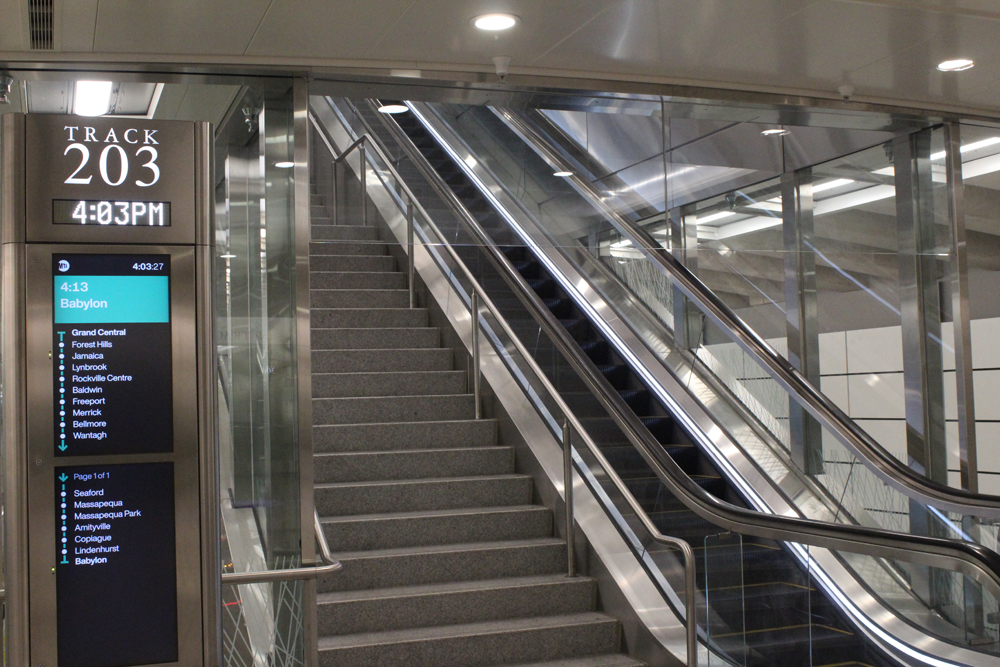
Once on the mezzanine, train indicators direct travelers either up or down to the proper track. One confusing attribute of these, however, is that the current time—not the train’s departure time, is shown next to the track number. This can be heart-stopping for uninitiated travelers who have just made a trek that might have taken 15 minutes from their Metro-North train. Is it leaving? Did I miss it? Not to worry — the train’s departure time is listed below with the stops it will make.
Arrived!
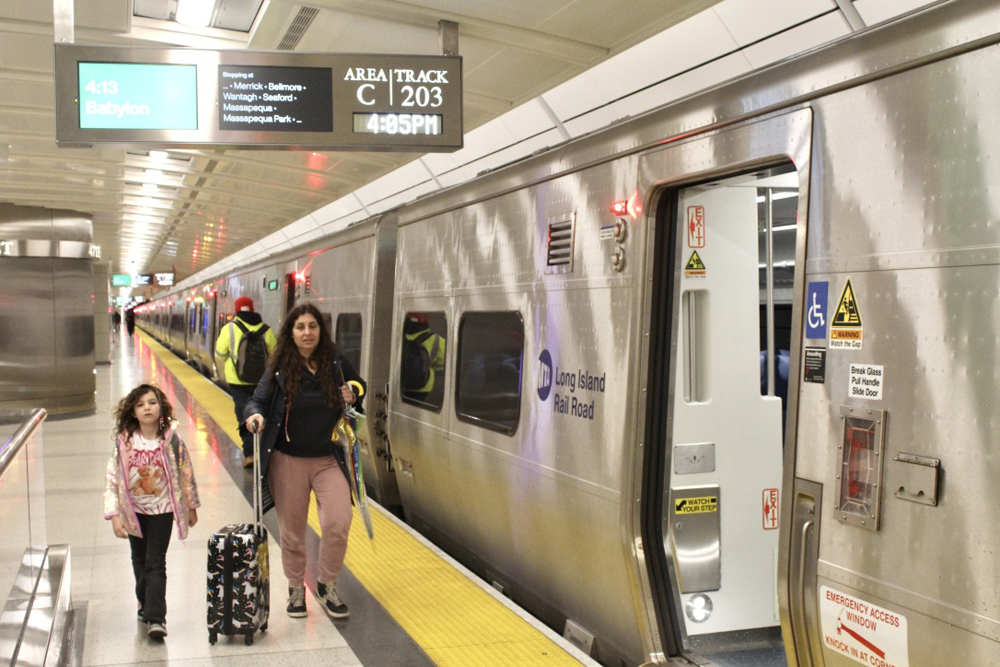
At the spotless track level, the current time, departure time, and station stops are displayed next to the departing train above the platform. Unlike their dingy counterparts at Grand Central Terminal, these broad platforms are well-lit and inviting.
Passengers making the transfer in the reverse direction from Grand Central Madison to Grand Central Terminal won’t necessarily know whether their Metro-North train will depart from the upper or lower level, so going to the main concourse is the best plan. Once again, signage to do that is abundantly clear.














I arrived on the LIRR and was trying to get to the GCT Main Terminal. I found few signs. It was a hit-and-miss walk, and got there only by asking several people. I am looking for written directions.
Now for the cold water. I have concerns about what happens when bad events occur. When a hurricane like SANDY occurs, and water enters the RR tunnel entrance and flows down into the GCM station. How much redundancy is in place to:
1 Keep power on for: emergency lighting, escalator & elevators; and ventilation
2 Pump capacity to keep the tunnels and station useable.
As you may remember, both the East River and the Hudson river tubes flooded but Penn Station is above the river. Nothing can go wrong, go wrong, go wrong.
Best write-up and description of the East Side Access I’ve ever seen. Great map. I’ve been there and I could have used it. Does the best job of laying everything out I’ve seen. The LIRR should use it.
Amen to your thoughts on Messers. Johnston and Stephens, Charles!
I always look forward to any article Bob Johnston does on passenger rail, whether Amtrak, VIA or commuter rail. He is thorough and detailed in his presentations and has the facts/figures to back up his articles.
I’ve often wondered why the new terminal is called “Grand Central MADISON.” Due to the excellent accompanying maps, I now know: because it’s on the Madison Avenue side of the new tracks rather than the Lexington Avenue side….I also congratulate Bob Johnston for this great piece.
The article states that LIRR level is 140 feet below street level. I’ve been in London tube stations that were, I thought, VERY deep. Which is deeper London’s or the GCT Madison?
Deepest I know of on an anecdotal level (but don’t ask me the number) is Blue Line Aquarium Station in Boston, as it’s right on the edge of the harbor that the tube goes under. Then again, lots of subways (London, New York, San Francisco, etc. etc.) duck under deep-channel waterways so it can’t be all that unusual.
The deepest London Tube station is Hampstead on the Northern Line, at 192 feet. The deepest NYC Subway station is 190 St on the IRT Broadway Line, at 173 feet.
Matthew, I was going to mention the New York upper Manhattan station but my memory was very hazy. I have a very distant memory of an IRT station that’s a long way up but a shorter way sideways.
Bob:
Excellent article
With Bill Stephens on freight, and Bob Johnston on passenger, that’s excellence to read daily (and monthly in print). I won’t say that these two writers started the ethic of consistent excellence in TRAINS MAG — that goes back way before them — but they both have done their bits to continue the tradition.